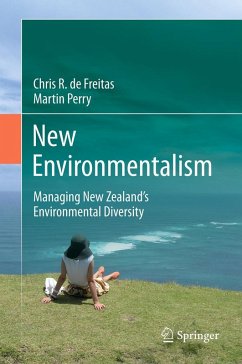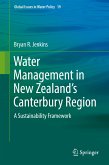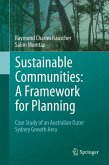New Zealand's environment, so widely celebrated for its beauty and relative integrity, requires wise stewardship in establishing the sustainable development needed for the long-term public good. How well is it fulfilling these aims? This study assesses how far the nation has lived up to the imperatives of a new public environmentalism that closely monitors increased pressure on resources, tracks business and state-sector environmental performance through sensitive performance indices, and expects environmental and economic goals to harmonise, not conflict.
The book explains the role of New Zealand's environmental agencies and regulatory legislation, taking in the impact of international agreements and treaties. It traces the fortunes of sustainable policy approaches and analyzes the activities of the public agencies charged with managing the environment. Moving on to a detailed thematic status report on New Zealand's environment, it examines rural, freshwater, coastal, oceanic, atmospheric and urban zones. Finally, chapters detail public perceptions and normative environmental values as well as the depth of business commitment to environmental responsibility. An ideal introduction to the topic for a diverse range of scholars, the book eschews any specific theoretical framework in charting the recent evolution, current operation and future trajectory of environmentalism in New Zealand. It backs strategic advice with both social and ecological data, and raises questions over the country's reputation for greenness at the same time as recognizing its numerous achievements. With neat summaries of key issues at the end of each chapter, expansive guidance on further reading, and a multitude of examples ideal for classroom debate, this volume gives us an informed, objective, and wide-ranging appraisal on a topic of increasing centrality in the policy debate.
The book explains the role of New Zealand's environmental agencies and regulatory legislation, taking in the impact of international agreements and treaties. It traces the fortunes of sustainable policy approaches and analyzes the activities of the public agencies charged with managing the environment. Moving on to a detailed thematic status report on New Zealand's environment, it examines rural, freshwater, coastal, oceanic, atmospheric and urban zones. Finally, chapters detail public perceptions and normative environmental values as well as the depth of business commitment to environmental responsibility. An ideal introduction to the topic for a diverse range of scholars, the book eschews any specific theoretical framework in charting the recent evolution, current operation and future trajectory of environmentalism in New Zealand. It backs strategic advice with both social and ecological data, and raises questions over the country's reputation for greenness at the same time as recognizing its numerous achievements. With neat summaries of key issues at the end of each chapter, expansive guidance on further reading, and a multitude of examples ideal for classroom debate, this volume gives us an informed, objective, and wide-ranging appraisal on a topic of increasing centrality in the policy debate.
Dieser Download kann aus rechtlichen Gründen nur mit Rechnungsadresse in A, B, BG, CY, CZ, D, DK, EW, E, FIN, F, GR, HR, H, IRL, I, LT, L, LR, M, NL, PL, P, R, S, SLO, SK ausgeliefert werden.
From the reviews:
"This book fills an important niche as a text for introductory courses on environmental management in a number of disciplines ... . To aid student learning, each of the chapters is preceded by a list of key questions and an abstract. There is a study guide at the end of each chapter comprising a chapter summary and discussion questions. The list of references at the end of each chapter provides a good guide to recent literature." (Ali Memon, New Zealand Geographer, 2014)
"This book fills an important niche as a text for introductory courses on environmental management in a number of disciplines ... . To aid student learning, each of the chapters is preceded by a list of key questions and an abstract. There is a study guide at the end of each chapter comprising a chapter summary and discussion questions. The list of references at the end of each chapter provides a good guide to recent literature." (Ali Memon, New Zealand Geographer, 2014)









